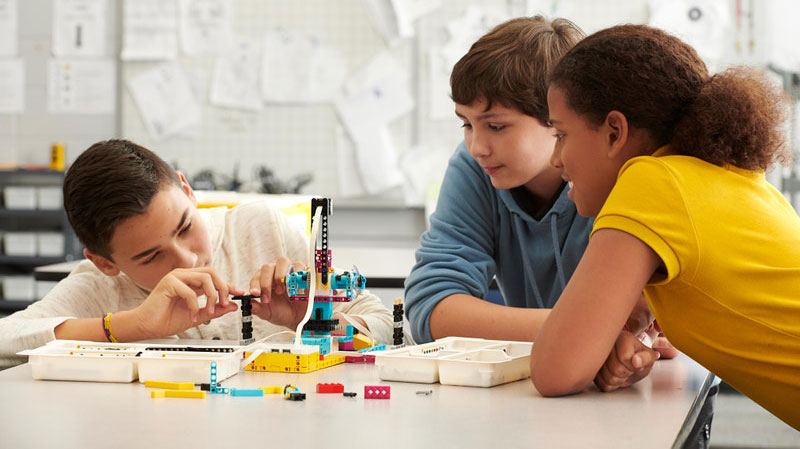Powering LEGO® Education SPIKE™ Prime Models with Sensors
Lego Spike Prime is a tool created for students in the 6th to 8th grade. Lego, primarily a manufacturer of toys, forayed into block coding and simple hardware so as to facilitate easy learning of coding and the fundamentals of robotics. It combines the colorful Lego building elements, the simple to use hardware and the rudimentary form of coding known as drag and drop or block coding to enable young learners to learn and practice complex concepts of mechanics and robotics. Spike Prime enables learners to think critically and creatively while solving real-world problems and simultaneously learning complex concepts which otherwise would have been irrelevant theoretically.
Globally, we have started adopting extra-curricular activities based on tools and gadgets that young students can create with Lego Spike Prime. Several schools in the Middle East, UAE and the rest of GCC have adopted Lego as their go-to-mode of teaching coding and mechanics to young students. Spike Prim is easy to understand and learn. It enables learners and young children to develop and work their curiosity out with practical experiments. The experiments are made possible with incredibly easy-to-use systems by LEGO. The hardware plays a central role in making this technology accessible and easy to understand for young learners. The spike Prime sensors are part of this accessibility creation for young children and learners.
Here’s what students were able to build with sensors provided by Lego in the Spike Prime kits:
The color sensor and its application in color sorting
The color sensors provided by Lego sense a difference between a total of 6 colors. Black, Purple, Blue, Green, Pink, Yellow and Red. Being able to differentiate between these colors enables the Lego build a learner might be making to apply this sensor for several simple tasks. For example, the most common use of the color sensor in a build is as the sensor for color sorter set up. In the real world, color sensors have a far more versatile application. They are used in computers that detect faces, that help research cancer and so much more. Which is why, how to apply and input from color sensors is what young students learn. Students typically in their Lego set create a simple mechanism that helps rotate a motor that sorts between different colors that are input to the tool.

Distance sensor application in rotation
While cars zoom through to the developed nations of the Middle East in cities like Dubai, it is a common sight to see cars that run with assisted cruise control. What is there is that, after having set a standard speed limit, the car essentially rides on its own change lanes on its own and reduces feeds in cases of obstructions on its own. This automation is possible with the help of distance sensors in the real world. The Lego distance sensors enabled the young students to emulate this exact process with the help of the spike Prime kit. The most seen with distance sensors is with Rotary machines where, in objects closer than a particular said distance, trigger the rotation to stop. This is a simulation of how exactly it works in automated cruise control in cars.
Force sensors for changing input
The real world has several applications ranging from heavy machinery in industrial works to automotive industries. Pressure sensors are also used in all sorts of applications such as lifts, mines, bridges and the list goes on and on. how the force sensors work is by detecting the exact amount of force being exerted on the sensor in Newtons. This enables the Lego system to treat it as a variable to change or to alter other parameters and factors based on the input received on the pressure sensor, to simply explain that, based on how hard the sensor is interacting with a reaction, can be coded for the designed machine. For example, a motor connected to the sensor could be coded to run faster the more force is applied on the sensor, essentially making it work like an accelerator button.
The sensors of the Spike Prime kit are how the bills the learners make receive information. Similar to how we receive information from our sensory organs. With a limitless number of applications possible with the three types of sensors, Lego kids are made into various experimental tools and machinery by young learners all across the globe. Lego continues to work and build easily accessible and understandable technology for the future generation of scientists and inventors.

